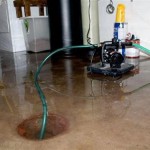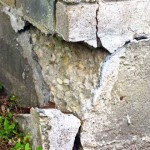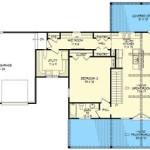Interior Perimeter Basement Drain System Cost
A basement drain system is a crucial component in protecting your home from water damage. An interior perimeter basement drain system is a network of drains installed around the perimeter of the basement floor, designed to collect and remove water from the area. This system can be particularly beneficial in homes prone to basement flooding due to heavy rainfall, groundwater infiltration, or plumbing leaks. Understanding the cost involved in installing an interior perimeter basement drain system is essential for making informed decisions regarding your home's protection.
Factors Influencing Interior Perimeter Basement Drain System Cost
The cost of installing an interior perimeter basement drain system can vary significantly depending on several factors.
1. Basement Size and Configuration
The overall size of your basement and its layout are major factors determining the cost. Larger basements with complex layouts often necessitate more materials and labor, leading to higher installation expenses. For example, a small rectangular basement might require less material and labor than a large basement with multiple rooms and alcoves.
2. Existing Plumbing and Electrical Infrastructure
The presence and condition of existing plumbing and electrical infrastructure in your basement can also affect the cost. If you need to run new plumbing lines or electrical wiring for the drain system, it will add to the overall expenses. Conversely, tapping into existing lines can save on material and labor.
3. Drain Material
The choice of drain material can influence the cost. PVC (polyvinyl chloride) is one of the most commonly used materials for interior perimeter basement drain systems, offering durability and affordability. However, other materials like ABS (acrylonitrile butadine styrene) and copper might be chosen depending on specific requirements and aesthetics.
4. Installation Complexity
The complexity of the installation process is also a significant cost factor. If you need to excavate or modify existing concrete floors to install the drain system, it will add to the overall cost. Similarly, installing the system around complex structural features like support beams or columns might require more labor and intricate work, leading to higher expenses.
5. Labor Costs
Labor costs are another major contributor to the overall cost. The hourly rate of skilled plumbers and contractors can vary depending on the geographic location, experience, and demand. It's essential to obtain quotes from multiple qualified professionals to compare labor costs and ensure competitiveness.
Key Components of an Interior Perimeter Basement Drain System
An interior perimeter basement drain system typically consists of several key components. Understanding these components can help you estimate the potential cost more accurately.
1. Drain Pipe
The drain pipe is the core component of the system, responsible for collecting and transporting water to the drainage point. The length and material of the pipe determine its cost, with PVC being the most budget-friendly option.
2. Drain Trough
The drain trough is a linear channel installed along the perimeter of the basement floor, where water accumulates and flows into the drain pipe. The length and material of the drain trough also influence its cost.
3. Drain Fittings
Various drain fittings, such as elbows, tees, and cleanouts, are used to connect the drain pipe and trough, creating the necessary angles and flow paths for efficient water collection.
4. Sump Pump
A sump pump is often included in an interior perimeter basement drain system to remove collected water efficiently. The sump pump capacity and features, such as battery backups and alarms, affect its cost.
Benefits of an Interior Perimeter Basement Drain System
Investing in an interior perimeter basement drain system can provide numerous benefits for your home.
1. Protection against Flooding
The system effectively collects and removes water from the basement, preventing flooding and associated damage to belongings, furniture, and structural elements.
2. Moisture Control
The system helps control moisture levels in the basement, reducing the risk of mold growth and promoting a healthier living environment.
3. Peace of Mind
Knowing that your basement is adequately protected against flooding provides significant peace of mind, especially during periods of heavy rainfall or potential groundwater infiltration.
Installing an interior perimeter basement drain system requires careful planning and professional installation. Consulting with experienced plumbers and contractors is essential to determine the most suitable system for your home, factoring in all aspects of the cost, including materials, labor, and potential modifications to existing infrastructure.

Interior Basement Perimeter Drain Systems Low Cost Waterproofing

Interior Basement Drainage In Michigan Drain System Installed Along The Perimeter Mi

French Drain Vs Waterguard Interior Drainage System

Interior Drainage System Structural Inspections Internachi Forum

Basement Repair Waterproofing Concrete Leveling In Michigan

Installing An Interior Basement Drain In Colorado New Mexico Dry A Wet By Placing Perimeter Drainage System Inside Your Co Nm Home

Drain Pipe Installation Install A Warranted Basement System In Your Home

Basement Drains 101 A Simple Guide For Busy Homeowners

Interior Basement Drainage In Michigan Drain System Installed Along The Perimeter Mi

Footing Drain Interior French Pros And Cons Sani Tred
Related Posts







